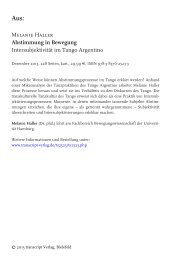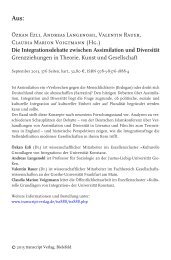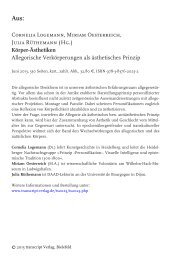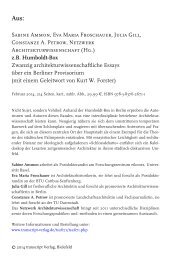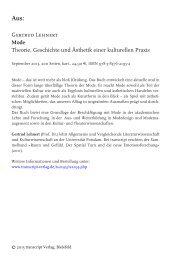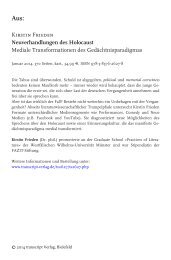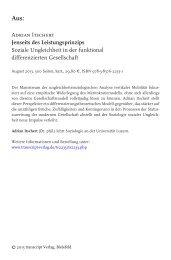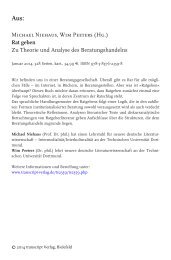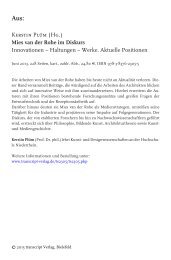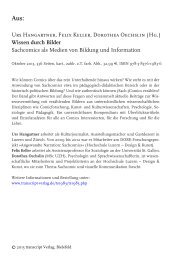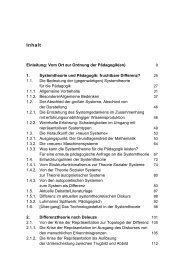Rainer Geissler, Horst Pöttker (eds.) Media ... - transcript Verlag
Rainer Geissler, Horst Pöttker (eds.) Media ... - transcript Verlag
Rainer Geissler, Horst Pöttker (eds.) Media ... - transcript Verlag
You also want an ePaper? Increase the reach of your titles
YUMPU automatically turns print PDFs into web optimized ePapers that Google loves.
<strong>Horst</strong> <strong>Pöttker</strong> | Successful Integration?<br />
This early connection of violence to an immigrated minority in the local press<br />
is noteworthy, as the connection was taken up again and expanded during the<br />
“Riots of Herne” ten years later. At that time, the regional and national press,<br />
in particular the conservative Rhein-Westfälische Zeitung, warned against a<br />
“foreign infiltration” and a threat to German orderliness by the allegedly<br />
strike- and crime-affiliated Polish migrants (Kleßmann 1978, 75-82). Regional<br />
and national newspapers could afford to treat the Polish minority as a subject<br />
involving political conflict. In contrast to the Recklinghäuser Zeitung, such<br />
papers did not have to serve a large audience composed of several, if not all,<br />
social classes. This may be the main reason for the omission of the conflictladen<br />
topic in the local reports of the Recklinghäuser Zeitung.<br />
4. The press of the Ruhr Poles and its instrumentalization<br />
by the German administration<br />
Polish migrants in the Ruhr area could choose from many different Polishlanguage<br />
newspapers, most of which were published in one of the four<br />
Eastern provinces and then mailed to their readers. In Rhineland-Westphalia,<br />
the Gazeta grudziadzka from Graudenz was the most frequently read<br />
newspaper, which in 1911 had 5,000 subscribers in the main postal district of<br />
Dortmund alone. Other Polish papers with a high circulation were published<br />
in the Ruhr area itself, such as the oldest and most important among them, the<br />
Wiarus Polski, which was published in Bochum. Kleßmann describes the paper<br />
as the “central organ and organizational focus of Poles in the Ruhr area”<br />
(Kleßmann 1974). Another radical paper with Polish nationalist tendencies was<br />
the Narodowiec, with 2,700 subscribers and a total circulation of 3,000. Also,<br />
there were religious newspapers with a strict Roman Catholic orientation, such<br />
as Tygodnik Maryanski, and trade union papers, such as Glos Gornika. It is<br />
noteworthy that there was a definite lack of a unionist, social democratic<br />
tendency among the newspapers that were published in the Ruhr area, as well<br />
as among the miners themselves.<br />
At the dawn of World War I, the total circulation of newspapers for<br />
Polish readers in the Ruhr area amounted to between 50,000 and 70,000. For a<br />
total Polish population of about 500,000, this number seems small – compared<br />
to the German segment of the population, in which case there was one<br />
newspaper for every third person. Yet, this number should be seen in light of<br />
the fact that the migrant population was mostly of rural background and often<br />
had only little formal schooling. Apparently, among Polish migrants there was<br />
a strong need to communicate in their familiar language – a need which<br />
certainly contributed to the formation of a culturally defined group identity.<br />
20



